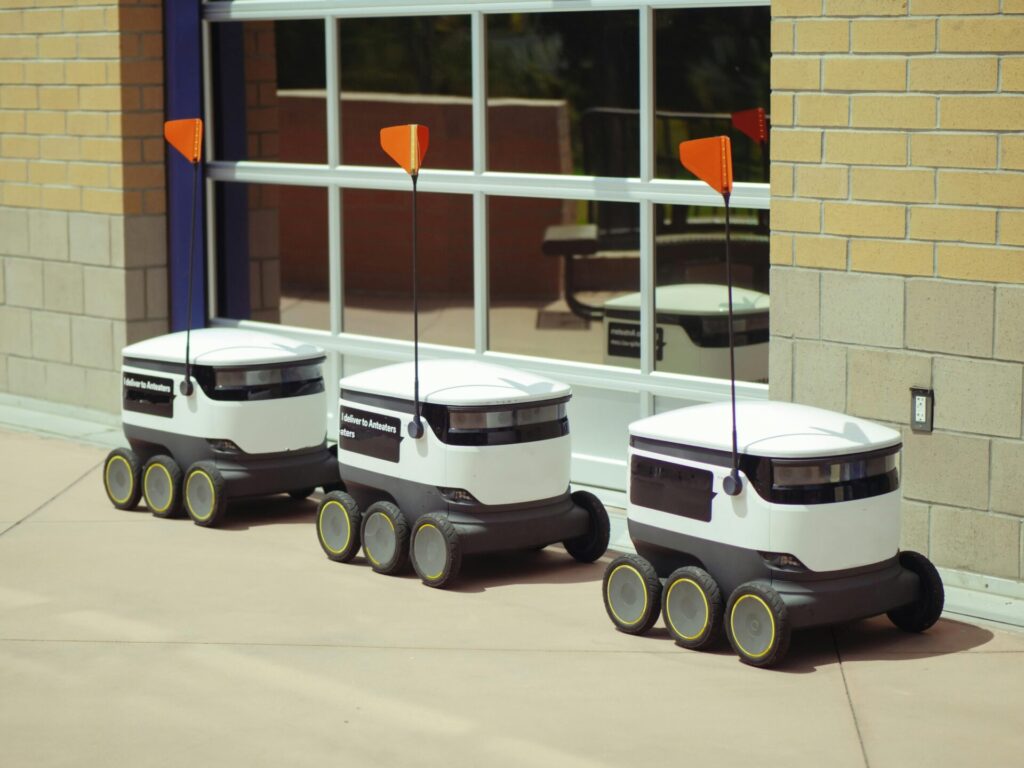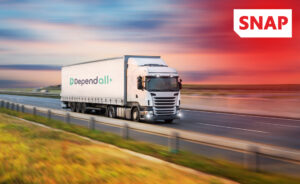Welcome to our latest blog, where we delve into the dynamic world of logistics. Join us as we explore ‘Last Mile Delivery Strategies: A Game-Changer for SMEs.’ Discover innovative approaches that can revolutionize your business’s final delivery leg, enhancing customer satisfaction and propelling your SME to new heights.
E-commerce growth was initially driven by lockdown and the pandemic, as a convenient alternative to obtain goods. However, while the pandemic may have been the catalyst that ignited this growth, it is far from a temporary trend.
It’s clear that the growth trajectory of e-commerce remains firmly in overdrive, reshaping the way businesses operate and consumers shop. Online shopping accounted for 18% of sales in 2021 and this is expected to grow to over 26% by 2026.
Small and medium sized enterprises (SMEs) need to find innovative ways to compete with retail giants and one such area of focus that has become a game-changer for these businesses is last mile delivery.
Last mile delivery represents the final leg of a product’s journey from warehouse to customer doorstep and has become a critical battleground for customer satisfaction and loyalty – and one, which when deployed correctly sets businesses apart no matter what the size. It’s also the critical point where something can go wrong, with 75% of consumers reporting they had some element of problem with online ordering.
It also doesn’t mean the literal last mile — it typically includes an approximately 30-mile or 50 kilometre delivery radius and can include a multitude of transport options from cars to vans, lorries to bicycles and scooters.
The Last Mile Delivery Strategies Challenge
Last-mile delivery does pose significant challenges for SMEs, mainly driven by the high costs associated with the process when paired with low-margin products. Offering affordable delivery options is a complex task, especially when the cost of last mile delivery alone accounts for 40-50% of an overall shipping cost – but also forms a key part of a customer experience.
Traditionally, larger businesses have also had the upper hand in establishing comprehensive delivery networks. SMEs often lack the financial resources needed for their development, plus unforeseen disruptions like traffic congestion, adverse weather conditions, or vehicle breakdowns further complicate the last-mile delivery process, resulting in increased costs and the need for impromptu solutions.
Customer expectations are also heightened by intense competition in the e-commerce sector, adding another layer of complexity for small and medium companies striving to match the swift and flexible delivery services provided by larger businesses such as Amazon.
Despite these challenges, small businesses can navigate the intricacies of last-mile delivery by leveraging technology, partnerships and innovative business approaches. The landscape is shifting as innovative strategies emerge, levelling the playing field, giving SMEs the opportunity to redefine the way they connect with their customers and build a sustainable and successful future in the digital marketplace.
Real-Time Tracking and Visibility
One of the key elements of a successful last-mile delivery strategy is real-time tracking and visibility. Customers today demand transparency and want to be informed about the status of their orders every step of the way – in fact, 83% of customers now expect a guaranteed delivery date. SMEs can leverage technology to provide accurate, real-time updates to customers, giving them trust and satisfaction.
This visibility not only improves the customer experience but also allows for better management of resources and optimisation of delivery routes. Effective communication, managing delivery expectations and easily accessible, friendly customer services are one way to stand out from the retail giants.
Collaborative Platforms and Partnerships
SMEs are increasingly turning to collaborative partnerships to enhance their last-mile capabilities. By joining forces with local delivery services, sharing delivery infrastructure such as urban warehousing or micro-fulfilment centres or utilising third-party logistics providers, SMEs can tap into existing networks without having to invest heavily in their own.
These partnerships enable faster and more cost-effective deliveries, contributing to a competitive edge in the market.
BOPIS Strategy
Buy online, pick up in store (BOPIS), also known as click and collect is a way to reduce shipping costs, whilst providing convenience to consumers. 59% of consumers now express an interest in using this as a shipping option, both to collect in store or at a parcel locker location.
This is typically cheaper for SMEs and often faster for the customer, so it’s an option that is rapidly growing in popularity. The key to a successful BOPIS strategy is to make it as easy as possible for the customer, sending email or text notifications when their order is ready for pickup, keeping orders in a secure and easy-to-access location, or set aside dedicated parking bays, and make sure a staff member is available to help when the customer arrives.
Successful implementation of the BOPIS strategy also relies on effective inventory management, real-time visibility of product availability, and a streamlined order fulfilment process. The integration of technology, such as mobile apps and user-friendly online platforms, enhances the overall customer experience and contributes to the success of the BOPIS model.
Automation and Robotics
Automation and robotics are revolutionising last-mile delivery for SMEs. Drones and autonomous vehicles are being explored as viable options to reduce delivery times and costs. While the full-scale implementation of these technologies may still be in the future for many SMEs, experimenting with automation, such as using chatbots for customer communication or smart route software for delivery optimisation, can significantly improve efficiencies.

Sustainable Delivery Practices
SMEs are recognising the growing importance of sustainable business practices, and last-mile delivery is no exception – two thirds of consumers now consider sustainability as part of their purchasing decisions. Implementing eco-friendly delivery options, such as electric vehicles or bike couriers, not only aligns with the values of environmentally conscious consumers but also reduces the carbon footprint of the delivery process. This commitment to sustainability can be a powerful differentiator for SMEs looking to attract a socially responsible customer base.
Personalised Customer Experiences
Last-mile delivery is not just about getting a package from point A to point B; it’s an opportunity for SMEs to create personalised customer experiences. Small businesses can differentiate themselves by offering unique delivery options, such as same-day delivery, special packaging, or personalised thank-you notes. These thoughtful touches can leave a lasting impression on customers, building brand loyalty and positive word-of-mouth.
Last mile delivery strategies have emerged as a critical differentiator for SMEs. By embracing technology, forging strategic partnerships, and prioritising sustainability and personalisation, small and medium-sized enterprises can not only compete with industry giants but also excel in providing a superior customer experience.




